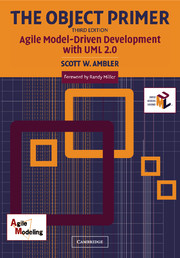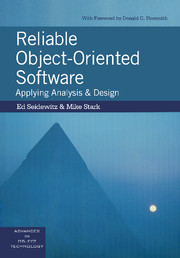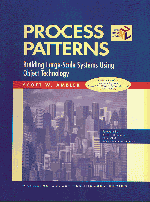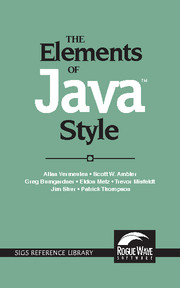The Elements of UML™ 2.0 Style
For all developers who create models using the Unified Modeling Language (UML) 2.x The Elements of UML™ 2.0 Style sets the rules for style that will improve your productivity - especially in teams, where understandability and consistency are critical. Coming from renowned UML expert Scott Ambler, the book furnishes a set of rules for modelling in the UML and describes a collection of standards and guidelines for creating effective UML diagrams that will be concise and easy to understand. It provides conventions for: Class diagrams; Timing Diagrams; Use case diagrams; Composite Structure Diagrams; Sequence diagrams; Interaction Overview Diagrams; Activity diagrams; Object diagrams; State machine diagrams; Package diagrams; Communication diagrams; Deployment diagrams and Component diagrams. The Elements of UML™ 2.0 Style sets the rules for style that will improve your productivity.
- Style guide for the newest version of the industry standard notation for software development
- Author is a well-known authority on UML 2 and a driving force behind the Agile Modeling methodology
- No other book like it on UML 2.0
Reviews & endorsements
From reviews of The Elements of UML Style by Scott Ambler: 'Just as Strunk & White's The Elements of Style provides rules of usage for writing in English, this text furnishes a set of rules for modeling in the Unified Modeling Language.' IEEE Computer
Product details
May 2005Paperback
9780521616782
202 pages
178 × 113 × 18 mm
0.175kg
59 b/w illus.
Available
Table of Contents
- 1. Introduction
- 2. General diagramming guidelines
- 3. Guidelines for common UML modeling elements
- 4. UML use case diagrams
- 5. UML class diagrams
- 6. UML package diagrams
- 7. UML sequence diagrams
- 8. UML communication diagrams
- 9. UML state machine diagrams
- 10. UML activity diagrams
- 11. UML component diagrams
- 12. UML deployment diagrams
- 13. UML object diagrams
- 14. UML composite structure diagrams
- 15. UML interaction overview diagrams
- 16. UML timing diagrams
- 17. Agile modeling
- 18. Summary
- 19. Bibliography
- 20. Index.










